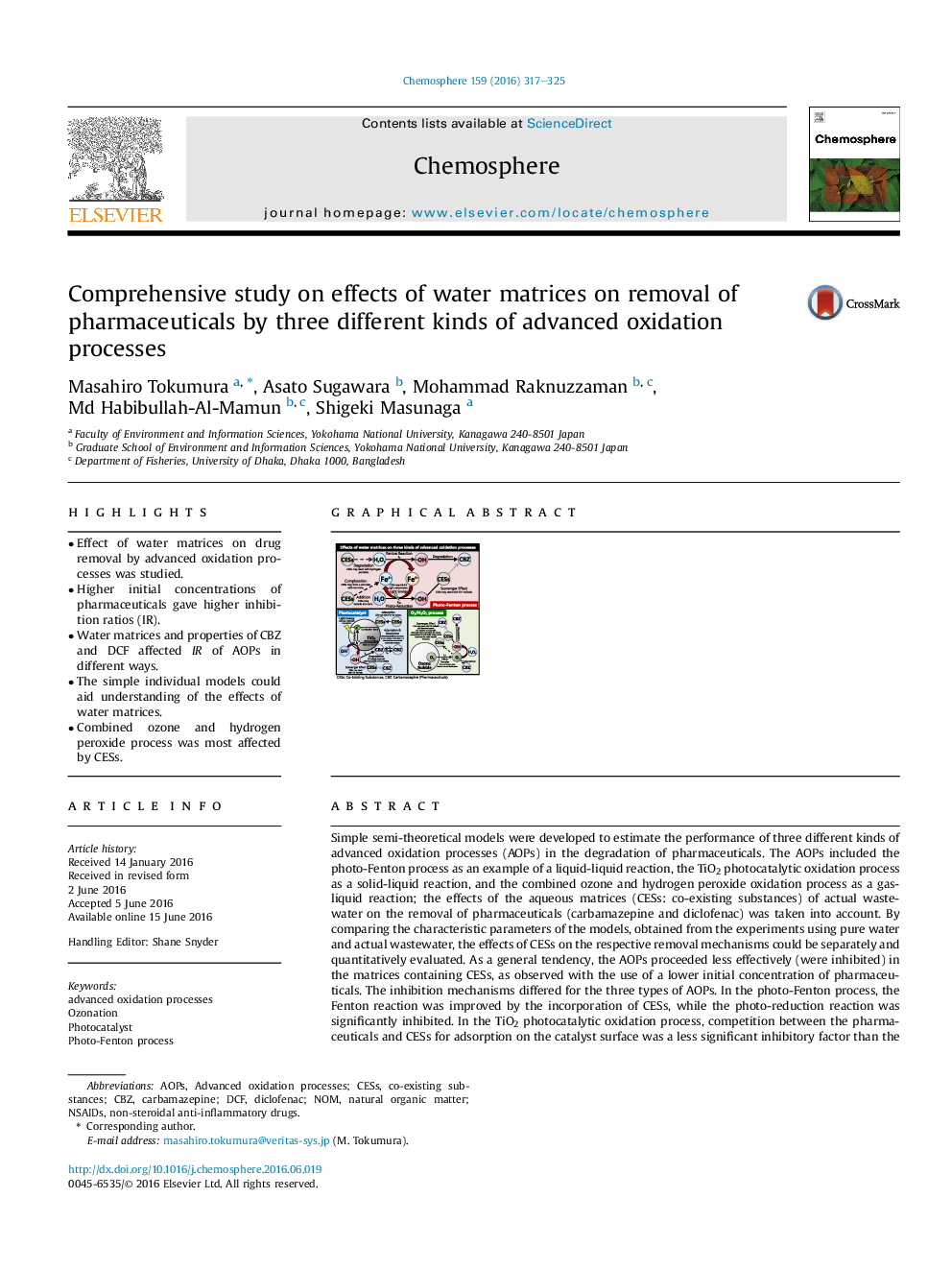| کد مقاله | کد نشریه | سال انتشار | مقاله انگلیسی | نسخه تمام متن |
|---|---|---|---|---|
| 4407468 | 1618812 | 2016 | 9 صفحه PDF | دانلود رایگان |
• Effect of water matrices on drug removal by advanced oxidation processes was studied.
• Higher initial concentrations of pharmaceuticals gave higher inhibition ratios (IR).
• Water matrices and properties of CBZ and DCF affected IR of AOPs in different ways.
• The simple individual models could aid understanding of the effects of water matrices.
• Combined ozone and hydrogen peroxide process was most affected by CESs.
Simple semi-theoretical models were developed to estimate the performance of three different kinds of advanced oxidation processes (AOPs) in the degradation of pharmaceuticals. The AOPs included the photo-Fenton process as an example of a liquid-liquid reaction, the TiO2 photocatalytic oxidation process as a solid-liquid reaction, and the combined ozone and hydrogen peroxide oxidation process as a gas-liquid reaction; the effects of the aqueous matrices (CESs: co-existing substances) of actual wastewater on the removal of pharmaceuticals (carbamazepine and diclofenac) was taken into account. By comparing the characteristic parameters of the models, obtained from the experiments using pure water and actual wastewater, the effects of CESs on the respective removal mechanisms could be separately and quantitatively evaluated. As a general tendency, the AOPs proceeded less effectively (were inhibited) in the matrices containing CESs, as observed with the use of a lower initial concentration of pharmaceuticals. The inhibition mechanisms differed for the three types of AOPs. In the photo-Fenton process, the Fenton reaction was improved by the incorporation of CESs, while the photo-reduction reaction was significantly inhibited. In the TiO2 photocatalytic oxidation process, competition between the pharmaceuticals and CESs for adsorption on the catalyst surface was a less significant inhibitory factor than the scavenger effects of the CESs. The combined ozone and hydrogen peroxide oxidation process was most strongly inhibited by CESs among the AOPs investigated in this study.
Figure optionsDownload as PowerPoint slide
Journal: Chemosphere - Volume 159, September 2016, Pages 317–325
